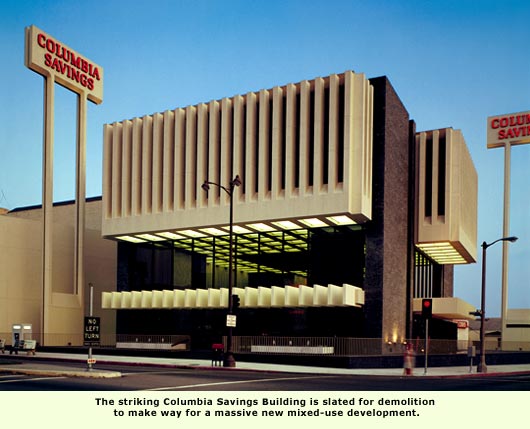Saving the '60s - Page 2
How best to save them?
Preserving buildings from the 1960s is rife with challenges and opportunities. On the one hand, the burden of the '50-year hurdle' lessens with each passing year. On the other hand, preservationists face new technical and philosophical issues.
For instance, many 1960s buildings feature mass-produced materials that are easily replicated, and/or experimental materials that perhaps weren't designed to last for generations.
Is actual historic fabric as important for these structures as it is for older structures of stone, brick, and old-growth wood? How do we adapt car-oriented designs to the contemporary desire for pedestrian-friendly communities? And while a number of 1960s architects pioneered energy-efficient modern design, many others didn't, instead taking full advantage of the era's cheap and plentiful energy. How do we enhance the sustainability of these buildings while maintaining their historic character?
See for yourself
The Conservancy will be exploring these and other topics over the next nine months, as they and ModCom present 'The Sixties Turn Fifty.' This broad-based educational program combines tours, panel discussions, other fun events, and new online features to raise awareness of Los Angeles' rich legacy of 1960s architecture and build a constituency for its preservation.
The Conservancy and ModCom welcome all supporters to these events. Those who live outside Southern California can participate by visiting the Conservancy's website to learn about L.A.'s rich 1960s heritage, vote for their favorite '60s buildings, share photos and stories, and more. For details, visit laconservancy.org.
• Trudi Sandmeier is director of education for the Los Angeles Conservancy. Cindy Olnick is the Conservancy's director of communications.
Photos: Julius Shulman, J. Eric Lynxwiler; and courtesy Peter Moruzzi Collection, Yamasaki Associates. © J. Paul Getty Trust. Used with permission. Julius Shulman Photography Archive, Research Library at the Getty Research Institute (2004.R.10)
Threatened: Columbia Savings Building
|





